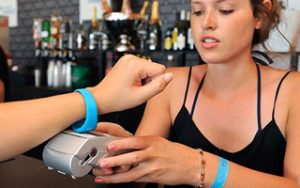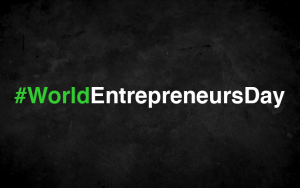
*Marvin Gaye Voice* What’s Going On?
We recently attended Ad Age’s “Wellness Revolution” conference—and as a creative agency with our eyes on pharma, CX, and employer branding, our mission was twofold:
1. See what the post-pandemic “Wellness Revolution” means for our clients.
2. Find ways to bring wellness into our team’s day-to-day.
 From low-tox to plant-based, the COVID-19 pandemic seems to have spawned one trend that’s here to stay: the prioritization of wellness. This amplified emphasis on being and doing better has pushed brand values, ethos, and accountability to the forefront, beginning—as Ad Age’s conference name suggests—a “Wellness Revolution.”
From low-tox to plant-based, the COVID-19 pandemic seems to have spawned one trend that’s here to stay: the prioritization of wellness. This amplified emphasis on being and doing better has pushed brand values, ethos, and accountability to the forefront, beginning—as Ad Age’s conference name suggests—a “Wellness Revolution.”
Event speakers from Linh Peters (Walgreens’ CMO) to Walter T. Geer (VMLY&R Health’s Chief Experience Design Officer) confirm that the picture of health is expanding. Wellness in the post-pandemic era requires a whole lot more than an apple a day and certainly more than just eating your Wheaties™.
The new bill of health includes everything from how employees are treated to how brands impact society at large. These things are top of mind for consumers, patients, and employees alike—and they want brands to notice.

Say “Namaste” to the Evolved Consumer
Within the CX, employer branding, and pharma spheres, we’re always driving toward one bottom line: the consumer. So, when there are worldwide shifts in how that consumer is thinking or acting, it’s up to us to take notice.
Throughout the “Wellness Revolution” conference, whether a panel was on running shoes, pharmaceutical marketing, or booze-less bevs, one through-line remained: the evolved customer. In the age of self-care and self-love, consumers are more intentional than ever about what they’re putting in and on their bodies and minds as well as what brands they’re allowing into their lives and wallets.
The new consumer is:
- Mindful of practices, from ingredients to impact
- Empowered by technology and accessible experts
- Focused on self-improvement
- Driven by a broader purpose
- Aware of brand politics and practices

Starting a Heart-to-Heart With the New Consumer
With a recent 40% increase in wellness-based marketing, the shift is too substantial to ignore. So, the question becomes: What does it mean to care for your consumers’ wellness in your marketing and branding? Here’s what we learned.
- Values, values, values. CSR and DE&I matter more than ever before. Establishing your ethos, being transparent, and exercising your values by taking meaningful action toward the greater good are all in the wider scope of how customers and employees expect to be cared for.
Meet people where they are. “Wellness Revolution” speaker Dania Alarcon (Chief Medical Officer, Wunderman Thompson Health) made the case for creating cultural touchpoints across the board. This means being accessible and familiar to the consumer whether they’re belly breathing in downward dog, watching daytime television, scrolling through TikTok, or shopping the grocery aisles. - Address educational gaps. Part of caring for consumers, patients, and employees is by empowering them—particularly by paying attention to where there may be educational gaps. We heard from speakers like Muffy Clince (Director of Emerging Brands, Ulta Beauty) and Jesse Stanley (Co-founder, Charlotte’s Web) that educational deliverables are now a large part of their marketing strategies.
- Build trust. Remember your consumers are smart—smart enough to see through green-washing, wellness-washing, and virtue-signaling. While keeping up with trends and staying relevant are important, so is staying authentic to your brand. Whatever you do, you want to make sure it feels organic—no wellness marketing pun intended.
- Take a holistic—and inclusive—approach. In a world where there are increasingly endless options, differentiating your brand as a top choice lies in how and where you meet your consumers. For Lululemon, this meant expanding its tactics. Nikki Neuburger (Chief Brand Officer) shared that its marketing plan includes varied strategies from brand ambassadors to pop-up shops and experiential stores. This also means broadening the scope of who you view as your market. For Brooks Running, this meant taking its brand from a running-as-sport brand to a running-as-joy brand.
Now What?
There you have it—the world and the world of marketing are changing. So, allow us to leave you with some superfood for thought: In the be better era, competitors are also expanding.
If your brand is ready for a growth journey of its own, check out our website.



